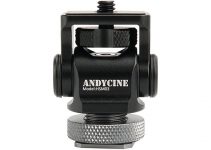The filmmaking process is never certain. While you may spend months or even years planning in advance, there may come a time in post-production where you wish you did things differently – from something like missing a particular shot to a minor but noticeable continuity error.
In that case or on any other similar occasion when you’re in a pinch or you’ve simply run out of options, here are five post-production tricks to use in Adobe Premiere Pro and After Effects that might not only be a real life-saver in the editing bay but could also give you some excellent creative ideas on how to enhance your upcoming filmmaking projects.
First, let’s say you initially shot your subject on a still tripod, but eventually found it to seem a bit too static. To fix this, you could easily animate your video in post-production by assigning a few keyframes to the property you want to manipulate.
To add some dynamic movement to your static-looking shot, click on the Toggle Animation button corresponding to the position and scale properties under the Effect Controls, move forward in the clip, then change the parameters to the position and scale. You can either have the shot slowly zoom in or out to your liking and modify the position to compensate for the movement.
While you can adjust the position, scale, and the speed of the animation, it’s important to remember that the way you move the shot can affect the meaning behind what you’re shooting. For instance, moving fast may indicate importance or give off a high-speed action vibe, whereas a slower speed in the animation conveys a more calm, relaxed, or even dramatic tone.
Another great technique to have in post-production is stabilizing your footage using the keyframes. While both Premiere Pro and After Effects comes with Warp Stabilizer, sometimes the shot you’re hoping to stabilize may not work well with the plugin. This doesn’t mean you have to settle for shakiness! To salvage the shaky shot, you can use keyframes to counter the rapid movement.
To do this, use the same technique as in the previous tip except you’re mainly going to keyframe the position property. To stabilize the shot with the keyframe, you need to counter the movement that is on screen. For instance, if the shaky movement in the shot is going up, counter the movement by key framing the position down. Experiment with the speed of the animation and the amount of keyframes you use to find the best look for you shot.
Remember not to go too overboard with this or else the camera movement will seem more robotic rather than organic. Now let’s say that while you’re editing, you want to put the shots next to each other. The problem is that the close-up shot doesn’t follow the exact movement as the wide shot, making the flow of the cut seem too sudden. You can easily fake continuity in After Effects.
In the Kriscoart’s video, he had a wide shot of someone lifting the cover of a car and a closeup of just the car’s headlight. He wanted to edit the close up to come after the wide shot, but since the movement wasn’t the same in each shot, the edit felt a bit odd. To remedy the situation, he brought both shots into After Effects, isolated the car cover movement from the wide shot using a mask, then added it on the top of the close-up shot to make it seem like the shots flowed seamlessly together.
A similarly useful tool to remember in post-production is the use of both After Effects and Photoshop to remove reflections. As you’re recording on set, you may sometimes forget that there are reflective objects that show your own cast, crew, or even gear, possibly attracting unwanted attention from your audience. This is actually a rather simple fix, although it may take some time and effort depending on the complexity of the reflection.
To hide the unwanted subject, take a single frame from After Effects and bring the file into Photoshop. Inside of Photoshop, use the clone stamp tool, get a sample of the area surrounding the unwanted subject, and paint over it. After a bit of patience and precision, you should successfully paint out the subject. Once finished, bring the still back into After Effects and mask over the reflective area to integrate the touched up file and the raw footage. Make sure to also add some camera blur or do any necessary color correction to match both files together.
It’s also worth noting that this technique is best for shots without movement because if the reflected subject or the shot is moving, you will have to paint out more than one frame, which will take much more time.
While in After Effects, another creative trick to enhance your shot is to use masks to shape the lights in your scene. Maybe you found that the floor was too dark? Or perhaps you thought that the highlights in only the walls were too blown out?
Rather than trying to color grade the entire shot, you could use the masking tool to cut out shapes in your scene and only apply particular color grading tools to those areas. By isolating certain parts of your image, you’ve created a simple way to make your shot seem more balanced, allowing your film to achieve a more cinematic aesthetic.
While all these techniques were meant to be used with Premiere Pro, Photoshop, and After Effects, it’s important to note that they could also be done in other editing/VFX applications by finding the equivalent tools and adopt the techniques in your favorite software.
[source: Kriscoart]
Disclaimer: As an Amazon Associate partner and participant in B&H and Adorama Affiliate programmes, we earn a small comission from each purchase made through the affiliate links listed above at no additional cost to you.
Claim your copy of DAVINCI RESOLVE - SIMPLIFIED COURSE with 50% off! Get Instant Access!





